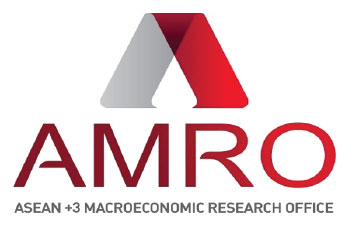“Si la pensée publique vous élève au-dessus de la généralité des hommes, laissez-vous humilier par l’autre, et tenez-vous dans une parfaite égalité avec tous les hommes, car c’est là votre condition naturelle. Ne vous méprenez pas en croyant que votre être ait quelque chose de plus relevé que celui des autres.”
— Blaise Pascal, Discours sur la condition des Grands
À Manille: In the wake of regional cooperation
On June 7, 2025, AMRO delegation, headed by AMRO Director Yasuto Watanabe, concluded a series of high-level meetings with the Asian Development Bank (ADB), including a substantive dialogue with President Kanda. The momentum toward deeper regional cooperation—especially the intention to connect various subregional blocs—was palpable.
Several reflections came to mind.
From 2007 to 2010, I served as an Executive Director at the African Development Bank. From Africa, I found myself envious of Asia’s economic trajectory. The region seemed not only to have taken off but to have reached 巡航速度—cruising speed. The contrast with Africa was stark. Africa was (and in many ways still is) Asia’s South-South partner—a continent with similar postcolonial legacies and war scars, but notably similar hopes for transformation. Yet paths diverted.
The extraordinary divergence in economic and social outcomes between Asia and Africa—despite their shared aspirations at the 1955 Bandung Conference—was likely unexpected by both sides. Among the many contributing factors, Africa’s experience tells us fragmented donor strategies, competing geopolitical interests, and persistent postcolonial legacies often hindered unified development. Crucially, the region lacked the institutional capacity to weather and redirect these external forces—ironically presented as goodwill but often masking deeper strategic intent—on its own terms.
While Africa was frequently mired in Cold War dynamics and external dependency, Asia was able to translate Bandung’s ideals into functional interdependence. A critical—and often understated—factor in Asia’s trajectory has been the ADB. Unlike many postcolonial regions where development was driven by donor-led agendas, the ADB adopted a technocratic and regionally anchored model of economic support. It served as a buffer against externally imposed development agendas, thoughtfully adapting its approach to local contexts.
Rather than externally imposed blueprints often shaped by vested interest of donor industries, the ADB offered non-imperial, politically neutral financing aligned with sovereign development priorities. Its success lay not in top-down control but in building mutual capacity—a logic deeply compatible with ASEAN+3’s ethos of consensus and restraint. Today, ASEAN+3 has coalesced around robust supply chains, macro-financial coordination, and co-specialization. The ADB is not merely a lender, but a regional enabler of strategic autonomy.
Just as critical, though less visible, is the ASEAN+3 Macroeconomic Research Office (AMRO).
As the region’s premier cardiology clinic treating both chronic and acute symptoms, (in a macro-financial sense, of course), AMRO has evolved into a model of quiet influence—monitoring, informing, and strengthening policy coordination without coercion. Where global institutions often impose, AMRO enables. It helps economies build resilience, stabilize currencies, and preserve their position in interconnected production networks.
In that sense, AMRO functions not as an enforcer, but as a guarantor of regional stability—a technocratic custodian of Pax Asia, a peace grounded not in dominance, but in restraint, trust, and institutional maturity.
À Pekin: In the wake of geopolitical shocks
On June 21, 2025, following a final ultimatum, the US launched precision airstrikes on Iranian nuclear facilities—marking the first direct US military strike on Iranian territory. This represented a major escalation of tension in the Middle East, unfolding alongside the ongoing war in Ukraine. Unless the situation de-escalates swiftly, its repercussions could extend far beyond the immediate region—potentially destabilizing the Asia-Pacific’s delicate strategic balance.
From an Asian vantage point, history teaches that global destabilization has often originated in the West—whether through imperial expansion, the devastation of two world wars, Cold War proxy battles, or even financial contagion like the Asian and Global Financial Crises. A familiar pattern persists: Western powers tend to externalize domestic political tensions by projecting them outward.
In contrast, the ASEAN+3 region has long prioritized avoiding entanglement in power struggles within its own borders. Its quiet resilience stems from an amoeba-like pragmatism—flexible, adaptive, and mindful of the dangers posed by external volatility. Now, in the face of rising geopolitical uncertainty, the region must not only preserve this inward-posture but also assert, collectively and unequivocally, its commitment to peace—or more precisely, to a principle of ‘non-conflict’—rooted in restraint and mutual trust.
Non-conflict is not passivity—it is a policy. A coordinated defense of our regional values, centered on non-conflict and underpinned by pragmatism, is essential to weather the tide of turbulence. Regional cooperation, anchored by the region’s leading institutions, must not be underestimated. AMRO should remain an indispensable part of this framework.
Epilogue
From Manila to Beijing, one theme consistently emerges: the critical role of regional institutions in advancing cooperation and safeguarding the ethos of non-conflict. In a world increasingly defined by unpredictable external shocks, the question we now face is familiar—how will the region respond? The historical record is mixed. But this time, there are reasons for cautious optimism.
Today, the ASEAN+3 region is highly interconnected and supported by a growing ecosystem of international institutions. AMRO, as an integral part of this framework, remains firmly committed to supporting financial stability and policy coordination across the region. In the face of global uncertainty, our collective ability to remain pragmatic, resilient, and integrated will determine how we navigate the challenges ahead.
